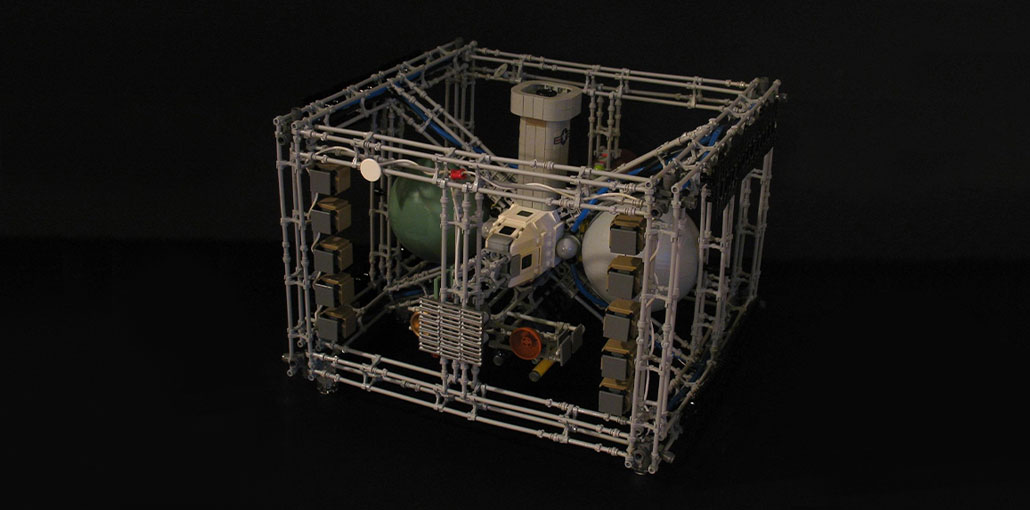Regardless of their purpose and mission, all satellites use satellite buses to operate. This bus is a platform that supports various payloads for low Earth orbit and is the primary system of any spacecraft. While the payload of each spacecraft might differ, all satellite platforms have a similar makeup. They consist of multiple subsystems with different purposes. But some structures can vary, depending on the space mission.
What is a satellite bus system?
A satellite bus system is the main structural component of a spacecraft. Space companies build these platforms according to their client’s requirements. These structures can differ depending on what type of satellite bus they service. Most space platforms work as tiring mechanisms for spacecraft payload. Depending on the space mission, these platforms can be customized with transponders or sensors.
Space companies work on developing the most advanced systems that can withstand the harshest space weather conditions and would not break too quickly. Generally, space missions put spacecraft equipment at great risk. But, as we get ready for building based on Mars and Moon, we need to search for ways to make our space equipment durable and affordable.
The standard design of satellite bus
The concept design of any spacecraft bus implies building an elongated platform that would carry all necessary equipment, from computers to communicate with group stations to thrusters to adjust orbital parameters. Besides, every minute detail of a given space mission should be taken into account. It’s not always easy to adapt a satellite bus design to space conditions because some spacecraft are built with multiple purposes rather than one (remote sensing, weather forecasting, navigation, etc.).
Today, the most common, single-purpose bus should support up to 85 pounds of interchangeable payloads. Of course, different platforms are built for various payloads and missions, which means their design will vary. But eventually, all space platforms are built on similar design concepts that include all necessary electronics for the spacecraft to function, along with trusses and cables to hold those systems together.
Also read: How Network Based System Can Help To Combatting GNSS Outages
Modelling of the satellite bus
The satellite bus modelling process begins after space engineers have outlined satellite bus components gold and designs. This process is critical for any mission preparation stage. Engineers work together with scientists and use modelling tools for orbit determination, conjunction analysis, space environment analysis, etc. Further, detailed data obtained from modelling ensures that every scenario and factor of a future mission has been considered.
Simulation software also plays a crucial part in this process. Modelling simulation software uses the most advanced data processing analyses to replicate space conditions. It works with multiple parameters to run simulations and calculate optimal orbit placement. The latest modelling techniques also simulate how and when spacecraft will send communication data to ground computers. Modelling phases are essential for developing an optimal mission profile for spacecraft launch and further orbital maintenance.
Satellite bus development
Space scientists and engineers are also working on more advanced satellite bus concept developments. One such development implies building a structure that’s precisely oriented to allow high-gain sensor systems, antennas, and high-powered solar arrays to be deployed. Other challenges in spacecraft platform development include designing space tech with strong structures and low mass, which ensures that thrusters have a longer life, power systems can perform better, thermal control is optimized, and development cost is reduced.
Space tech development is advancing every day as new technologies emerge. These technologies are used for different applications, while space companies invest in innovative approaches to ensure we establish ourselves as a multi-planetary species as soon as possible.
What is the purpose of a satellite bus?
A satellite would not function without a bus, which is its main structural component. Satellite buses hold scientific instruments and payloads that make sure a spacecraft achieves its goals and can transmit data back to Earth. Some providers also maintain service systems for their spacecraft already in orbit, but right now, this technology is still in the early development stages.
Another important purpose of any satellite bus is the power distribution network inside a given spacecraft. Space companies build different satellite buses with specific structural designs for various space missions. Building specifications of a satellite bus usually depend on what payload the bus can support. In other words, different satellite bus variations should meet mission specifications.
Space companies design their satellite bus models according to what customers are asking or what scientific goals are set. Different space missions require specific satellites and spacecraft buses. So, satellite buses can’t have the same design for all missions. Space scientists and engineers invest a lot of time and effort into satellite bus development because Earth needs advanced equipment for space exploration purposes.










Leave a comment